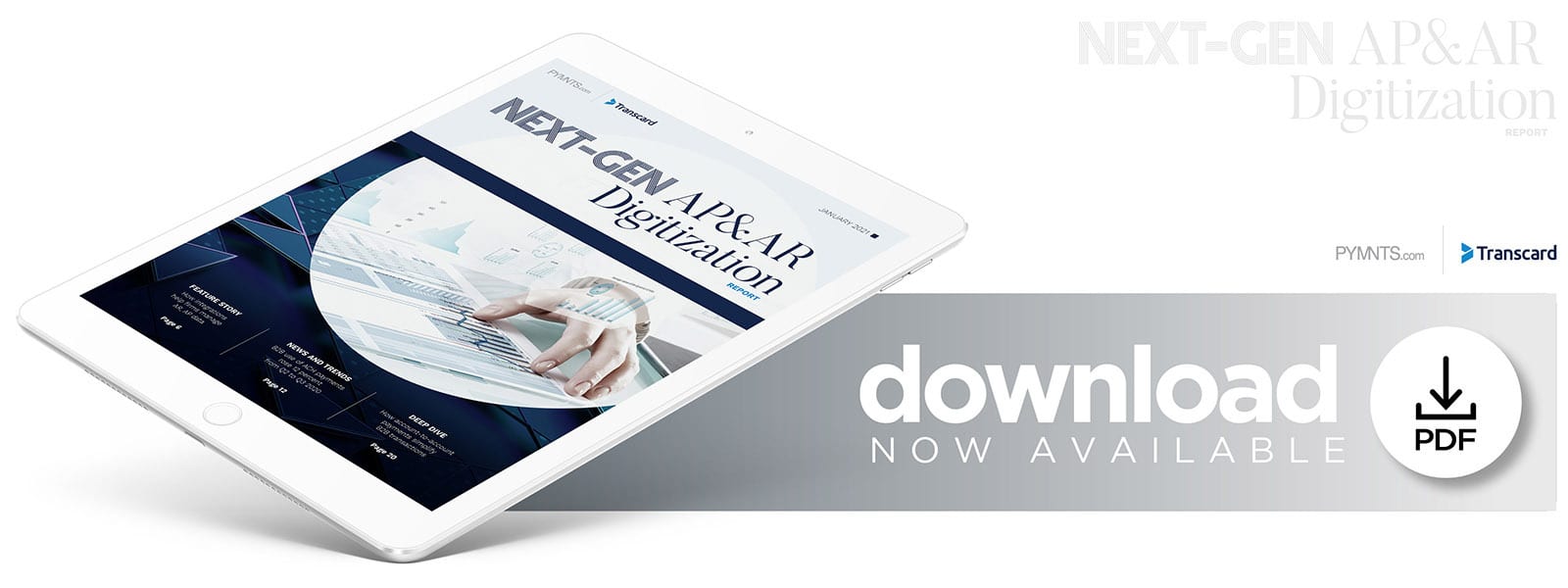Deep Dive: How Real-Time Account-To-Account Payments Ease AR And AP Pains

Businesses are struggling to find cost-effective ways to transact with one another during the pandemic-induced economic slump. Slow-moving payments and sluggish, error-prone reconciliation processes have been problematic even during normal times, but the ongoing crisis has made these frictions more painful. More companies are now looking to modernize their payment processes to avoid sending and receiving paper checks and manually uploading their transaction details into their systems.
Check use for B2B payments is declining but was still the most commonly deployed transaction method in 2019, representing 42 percent of such payment flows. More firms are looking to change this, however, with 65 percent recently stating that the pandemic is driving them to transition from paper to digital payment methods. Companies can select from numerous options as they make their switches, and this Deep Dive examines the role of account-to-account (A2A) payments in these modernization journeys.
What A2A Payments Offer
A2A payments enable companies to deliver funds from their bank accounts directly into those of their recipients, cutting out the intermediary steps of printing, sending, receiving and depositing checks and then waiting for those funds to settle. This accelerates timelines and can aid vendors looking to promptly receive revenues and protect their cash flow. A2A payments can be transmitted in several ways, including via standard ACH, same-day ACH, the RTP network and wires.
Wire transfers tend to be expensive and are often reserved for specific situations, such as when companies need to send funds across borders to international vendors. They can also be useful when sizable domestic payments must reach their recipients within 24 hours, as in the case of firms needing to meet application and payment deadlines to secure real estate deals, for example. Domestic payments in the U.S. may also be sent over the ACH Network, which has lower fees and is often preferred for small-value transactions. Businesses can also use application programming interfaces (APIs) to integrate ACH A2A payment capabilities directly into their accounts payable (AP) software to streamline the payments process. ACH still takes several days to reach recipients. The transactions are processed in batches and only on business days, so it also can take longer for funds to arrive if money is sent on a Friday or prior to a bank holiday. This still represents a vast improvement over checks, which can take weeks to travel via postal mail and settle into recipients’ accounts.
Same-day ACH payments were rolled out starting in 2017, enabling funds and payments data to reach recipients’ bank accounts on the same days they are sent if payments files are submitted by certain deadlines. TCH — a banking association and payments company owned by large commercial financial institutions (FIs) — provides an even speedier A2A capability with its RTP network. This offering provides the real-time delivery of funds and payments data within the U.S., with 24/7 year-round processing. The rail is not ubiquitous, however, meaning the method is limited to FIs that have joined the network and enable their business clients to use the system. This also means that businesses that bank with an RTP-connected FI can use the offering only to pay vendors whose FIs also participate in the system, and there is no mandate requiring banks to join the network because it is offered by a private company. Companies may also make different determinations regarding which A2A option suits their needs for specific B2B transactions. Transitioning will still enable swifter experiences than those provided by paper checks, regardless of whether AP teams choose to use standard ACH or RTP.
The Allure Of Better Access To Payments Data
Recent evidence suggests that companies may now be taking more advantage of RTP services or pressing their FIs more strongly to participate. A PYMNTS survey of 500 financial executives found that 85 percent have adopted or intend to adopt RTP within three years. Executives were turning to these rapid-fire A2A payment methods for various reasons, including to unlock quick, around-the-clock payments as well as access to better and easier-to-process payments data. The study found that 77 percent of respondents said 24/7 year-round service was a “very” or “extremely” important benefit, and 76 percent said the same about the method’s ability to make funds instantly available.
A growing share of executives are also interested in using fast A2A tools to help with reconciliation processes. Accounts receivable (AR) teams must have a clear sense of which payments have been received and to which orders the funds correspond so they can determine whether they still need to chase down overdue invoices. AP departments, meanwhile, need to know how much funding is leaving their accounts and for which purposes to enable clear oversight and cash flow monitoring, but this can be challenging. Businesses can find that ACH transactions do not deliver payment-related details in ways that are easy to process or with the data that vendors may desire, for example.
Some firms may still consider paper checks well-suited to their data-related needs because these payments provide myriad details. This transaction method has its own drawbacks, however, because it is slow-moving and because staff may also have to manually type up the details provided on paper checks, potentially enabling human errors to slip through and muddy reconciliation. The shortcomings of both ACH and paper checks could ultimately drive companies to adopt a third option: RTP.
More companies may now be seeing RTP as a way of achieving speed while also meeting payments data goals, with 77 percent of executives in the PYMNTS survey stating that improved reconciliation with enhanced data was an important benefit. The survey also showed that 47 percent of firms said in 2018 that they valued the enhanced messaging capabilities RTP provided, and a greater share — 64 percent — said the same in 2020.
AR and AP teams are paying more attention than ever to corporate cash flow during the pandemic, and many are making strong efforts to abandon slow, paper-based methods for swifter A2A options. Methods that also provide detailed, easy-to-process payments data can further alleviate the strain financial departments are facing in this challenging business climate.

